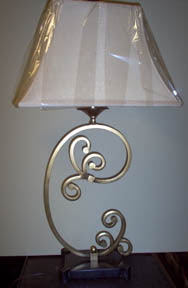By: Jody Timmer
So you’ve started your business by getting your company name and a Sales Tax number. That was easy. Now you’re ready to do business, right? Well, not exactly. I’ve been in the design business for 20 years and I’ve seen a lot. New designers think that they can do business because they have their degree and set up a company. Many of you have taken further steps with your business, but lots of designers are not aware of some procedures that can protect you and your business, both legally and financially. I’m going to share some very important business principles from both the accounting and legal sides to help you run your business better.
The number one issue I see with many designers is that they use their personal or joint checking accounts to pay their bills. Big mistake! This is known as the comingling of funds and according to Schaumburg accountant Bill Gallagher of GLM, Inc, you open yourself up to quite a bit more scrutiny from the IRS in the case of an audit. Basically this means that if you are writing checks on a personal checking account and if you are ever audited, the IRS can now go looking through your business and personal records. Always get a business checking account or one under your name only that is used solely for your business. The same goes for a credit card.
What kind of record keeping do you have in terms of expenses? Accurate I hope. If you want to take the mileage deduction, you need to have very precise documentation of the mileage, date and purpose of the trip. Without the accurate record keeping, you have now claimed what is known as a hidden expense and the auditors will look even closer for other things. For instance, if you are going on an appointment, start the trip meter at 0 and write down in a notebook or ledger book the date and appointment (with Mrs. Smith). When you get to Mrs. Smith’s house, check the trip meter and double the mileage to know what the round trip total miles are and record them next. If you have more than one business related trip, note them on the same line and follow the same procedure of recording the mileage. Effective 7-1-11,the mileage deduction is $.55 1/2 per mile. For the first half of the year the deduction $.51 per mile. Even if you haven’t been doing this before, it’s never too late to start.
Mr. Gallagher says that many small business owners have no clue whether they are making any money or not and if they are, how much are they “really” making. You may be a good designer, but are you making money at it? The following formulas are used to see if you are indeed making a profit. Sales Price minus Cost=Gross Profit. The next step to finding out how well you are doing is: Gross Profit divided by Sales Price=Margin or Percentage. If you are making less than 20% profit, is this business really worth your time and effort? This should be done monthly in order to gauge your success. Accurate accounting information helps you get these.
Speaking of accurate accounting info, most of you admit that you are “bad” at the paperwork end of your business. I used to train all the Cub Scout and Boy Scout leaders in the Western Suburbs. My biggest piece of advice to them was “Know Your Resources”. You may not be good at paperwork, but someone you know is. Hire them to help you out. It could even be one of your friends, neighbors or relatives. Most of you could get by with that kind of help just one or two times a month. Those of you doing a lot of business would need someone weekly or even twice a week. This opens you up to more time to actually do design work and less time to worry about the paperwork. Always get some kind of report to see how you are “really” doing. If you would like to still handle this yourself but aren’t sure how to begin, just know that most Junior Colleges offer what are known as Workforce Development courses. These courses include basic accounting, record keeping, accounting software programs such as Quickbooks, etc. This is just another resource out there for you.
Finally from the accounting side, are you paying your bills on time? If someone is helping you with your paperwork, chances are good that you are. All of you that pay on time make my job a lot easier and I genuinely appreciate it and thank you. This industry is very close knit and we share information with each other. If you pay one vendor late regularly, that vendor may call another vendor to see how you are paying them. You may not know this, but all vendors have the capability of reporting your payment history to a credit reporting agency. If you have a negative report and you are a sole proprietor, this will harm your personal credit, too.
Now we will turn toward some of the legal issues that you could be faced with. The biggest concern I have is that very few of you have 3 additional letters after you company name. What am I referring to? Are you incorporated? If not, what about liability issues. Attorney and CPA John Pembroke of Park Ridge advises all business owners to incorporate. The cost to do this runs around $1000. Money well spent. While you or your accountant can set up your own incorporation, only an attorney can file the annual documents with the State, so it makes sense to just let your attorney handle it in the first place. It doesn’t matter whether you choose to be Inc, LLC, Ltd or something else, each one has its own tax advantages and legal liability protections. Your attorney can give you the pros and cons of each. Mr. Pembroke likens it to driving your car to a client’s house and hitting someone, you will be held personally liable, but they can’t come and take your house. He also shared something that even I didn’t know. If you do have the Inc, LLC or Ltd after your company name, you MUST put it on everything related to your business, such as business cards, stationary, flyers, etc. If you have a logo, put the full company info in small print somewhere else on the document. If you fail to use those 3 letters after your company name, you have in essence, given up your right to limited liability. This is all relating to “Observing the Corporate Formality”. In short, this is the way you run your business to avoid legal complications.
A lot of designers use contracts, but a few of you don’t. For those of you that don’t, good luck trying to collect money from a client without something in writing regarding the sale. While office supply stores carry contract forms, Mr. Pembroke states that you should have a contract specific to the design business and more specific to your business. You should state how you charge, how you collect and what is expected of the client. If you start out with all this info in front of the client, and they sign and date this, you have less of a chance of bigger issues on the back end. Please note that in the State of Illinois, everyone has the right to cancel within 72 hours, so you need to know this. We always suggest that designers hold off placing a big order for a client for 3 days just in case the client changes his or her mind. Most vendors won’t let us cancel orders once they are in production.
Another big concern for a few of you is “What if my client won’t pay me after the order is delivered?”. Mr. Pembroke states that collection begins with the first phone call to the client or on the first appointment. If you state in your contract how you collect your money, there shouldn’t be any problems. He suggests that you collect the money upfront for all the materials involved so that your profit is what would be the balance at the end. Of course the client wouldn’t be aware of this, but what would you rather be out, half the cost of the goods of which you must pay for to the vendor or what you should be making? The same goes for those of you who charge an hourly fee. You should NEVER leave the client’s home without a check in your hand. On the outside chance that you are owed a substantial amount of money, then you have 2 options. One is to turn this over to a Collection Agency. They usually charge you 25% of the balance to collect. The other option is to go to Small Claims Court. This can be done in Cook County for amounts up to $10,000. The bottom line is to collect as much as you can on the front end to avoid any problems on the back end. If there is a problem with a product, let the client know that they can withhold a specified amount until the problem is solved. Chicago Design Team does this for designers when there is a balance owed to us, but there is a problem with a product.
We have just touched on some of the many business related issues that you could be confronted with. Both Mr. Gallagher and Mr. Pembroke agree that each designer should have an accountant and an attorney for the sake of getting the most out of your business with the least amount of headaches. Next month we will discuss some of the design issues.

 ral aspect.
ral aspect.

 my favorite item that arrived this month. I always love the things that come in from Elizabeth Marshall - sophisticated and fun at the same time. I'm glad to say this mirror brightens up the wall by the front desk, where I sit.
my favorite item that arrived this month. I always love the things that come in from Elizabeth Marshall - sophisticated and fun at the same time. I'm glad to say this mirror brightens up the wall by the front desk, where I sit.
 ite clock manufacturer, Timeworks, was bought out by Uttermost a while back. And whenever there is a buyout, there always seems to be a stock lag and this was no different. We have refreshed our clock displays and have several new ones to choose from!
ite clock manufacturer, Timeworks, was bought out by Uttermost a while back. And whenever there is a buyout, there always seems to be a stock lag and this was no different. We have refreshed our clock displays and have several new ones to choose from!
 ite clock manufacturer, Timeworks, was bought out by Uttermost a while back. And whenever there is a buyout, there always seems to be a stock lag and this was no different. We have refreshed our clock displays and have several new ones to choose from!
ite clock manufacturer, Timeworks, was bought out by Uttermost a while back. And whenever there is a buyout, there always seems to be a stock lag and this was no different. We have refreshed our clock displays and have several new ones to choose from!

